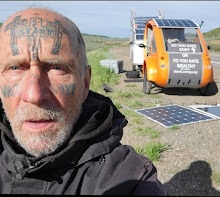
(Refiles to fix dropped word in lead)
(This story is part of a Reuters series on infrastructure)
NEW YORK, Jan 9 (Reuters) - Constructing new power lines to handle a huge increase in wind power in the Eastern half of the United States would cost $50 billion to $80 billion over the next 15 years, according to a study released on Monday by power grid operators.
That cost would be on top of the $700 billion to $1.1 trillion it would cost power plant developers to build the wind turbines that would produce the power, according to the study.
The report comes as the Obama Administration is pushing for the U.S. Congress to pass a stimulus measure to help bring the nation's economy out of the worst recession in decades. Included in both the U.S. House of Representatives and Senate proposals is about $4.5 billion to help upgrade the nation's power system.
Under a scenario in which U.S. production of wind power climbs to 5 percent of total consumption, and estimated $50 billion would be required to add the 10,000 miles (16,090 km) of extra-high voltage transmission capacity by 2024.
But under a more aggressive target of raising wind power's share of the U.S. power market to 20 percent, that cost would rise to $80 billion for 15,000 miles of new wires and substations.
Wind power currently provides less than 1 percent of the U.S.
electricity, though massive expansion of the renewable energy source is underway, prompted by new rules in several states that require power providers to boost their clean energy portfolios.
But most of the wind power development is in the sparsely populated areas in the middle of the United States, and transporting that electricity to the major demand centers on the coasts is expected to be costly and complicated.
Unlike electricity from coal, natural gas or nuclear power plants, the power flow from wind turbines can be erratic as winds rise and fall. That creates a need for special technologies to help balance the supply of power to the grid with the demand.
During the 2008 presidential campaign, U.S. President Barack Obama said he would seek to raise the share renewable power from all types of technology to 10 percent by 2012 and 25 percent by 2025.
The study was commissioned by the Midwest Independent System Operator, Southwest Power Pool, PJM Interconnection, the Tennessee Valley Authority, Mid-Continent Area Power Pool (MAPP), and participants within SERC Reliability Corporation (SERC).




